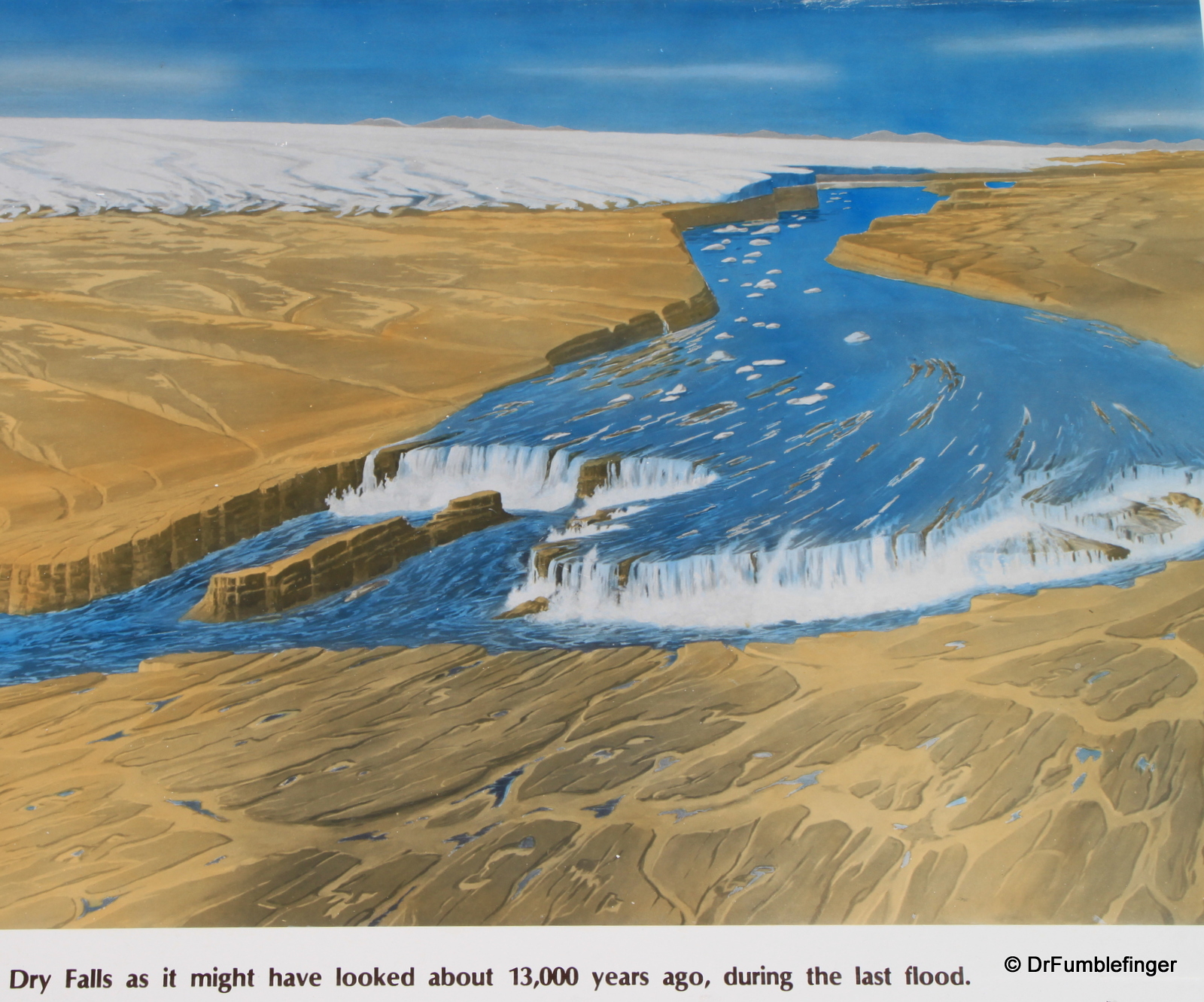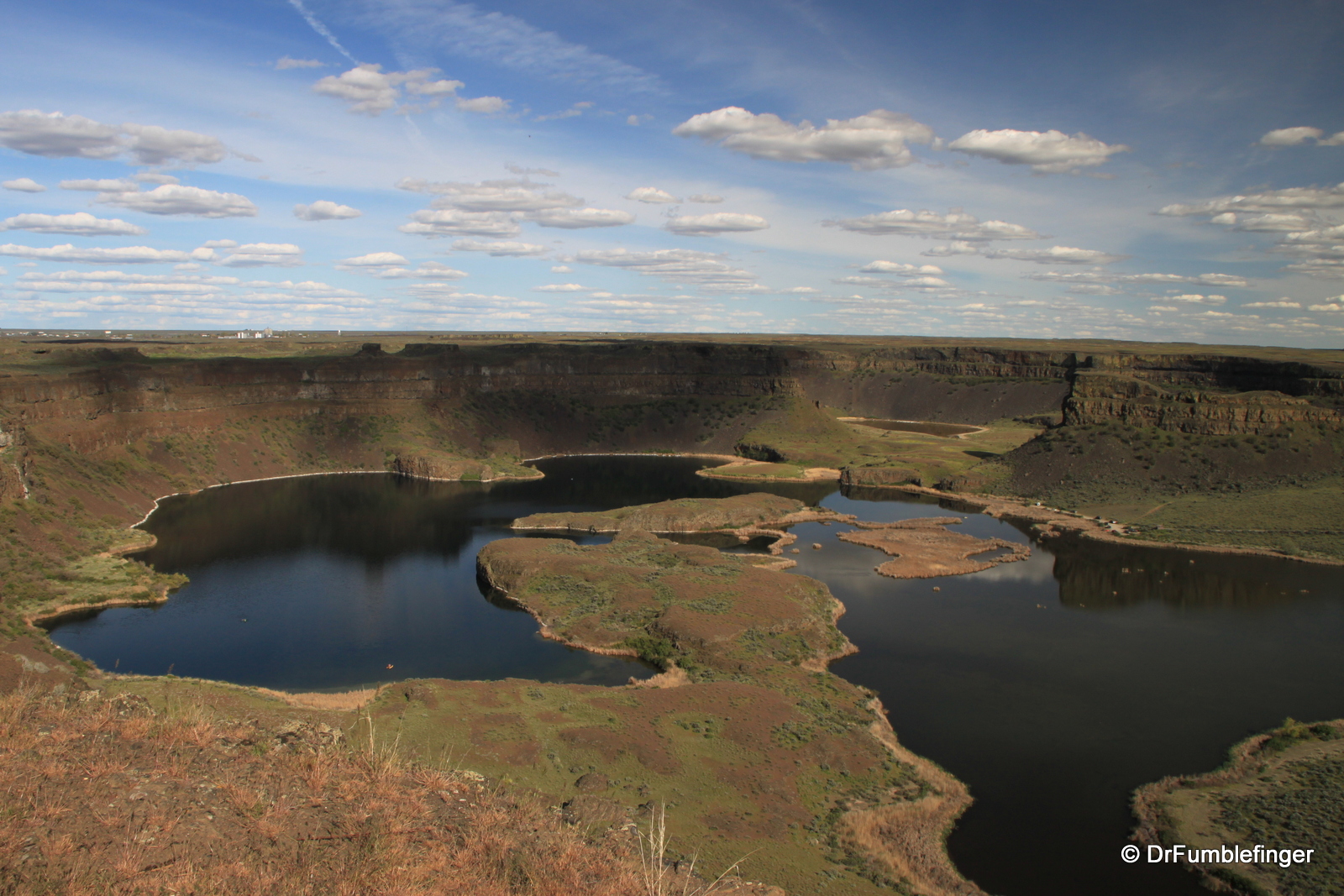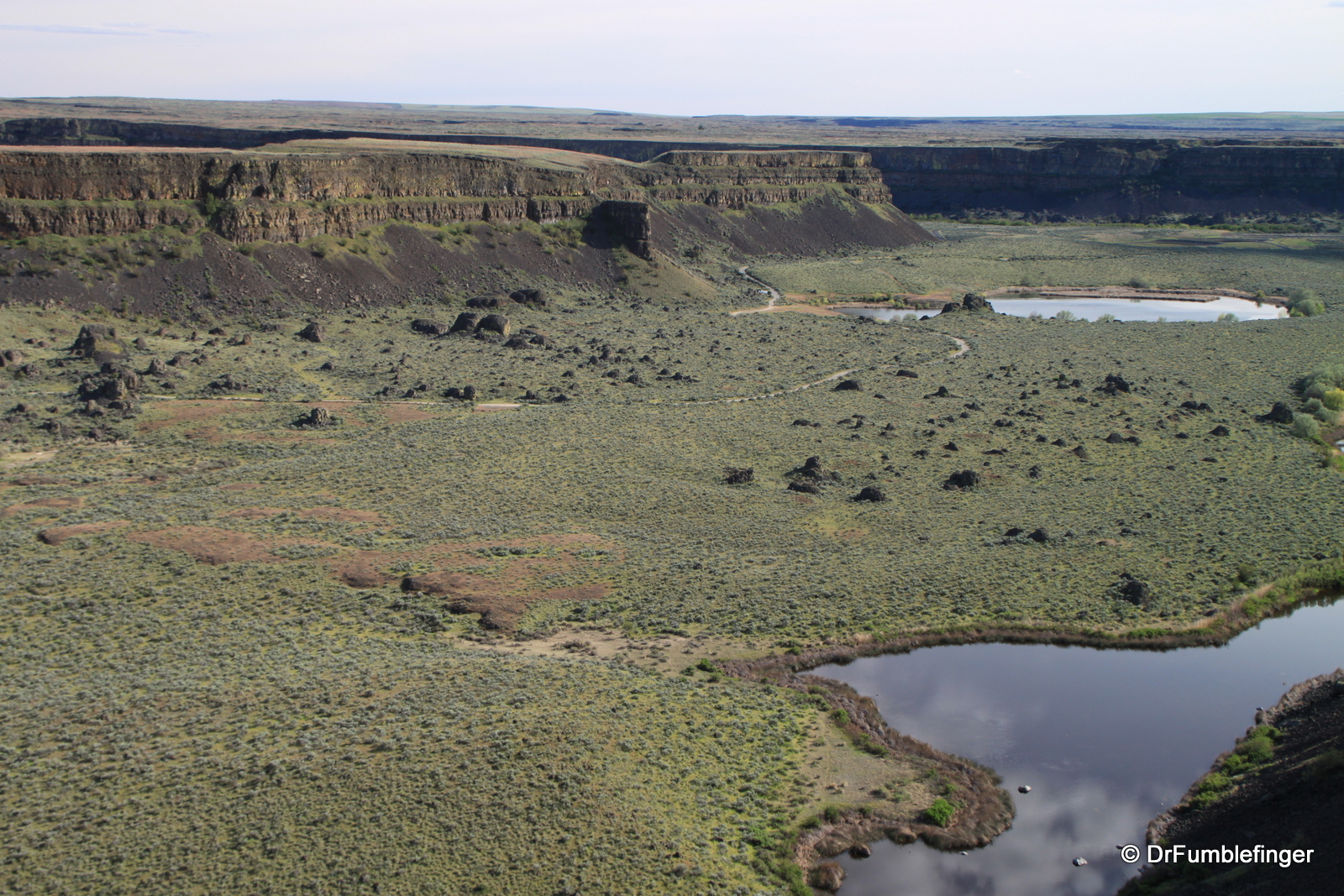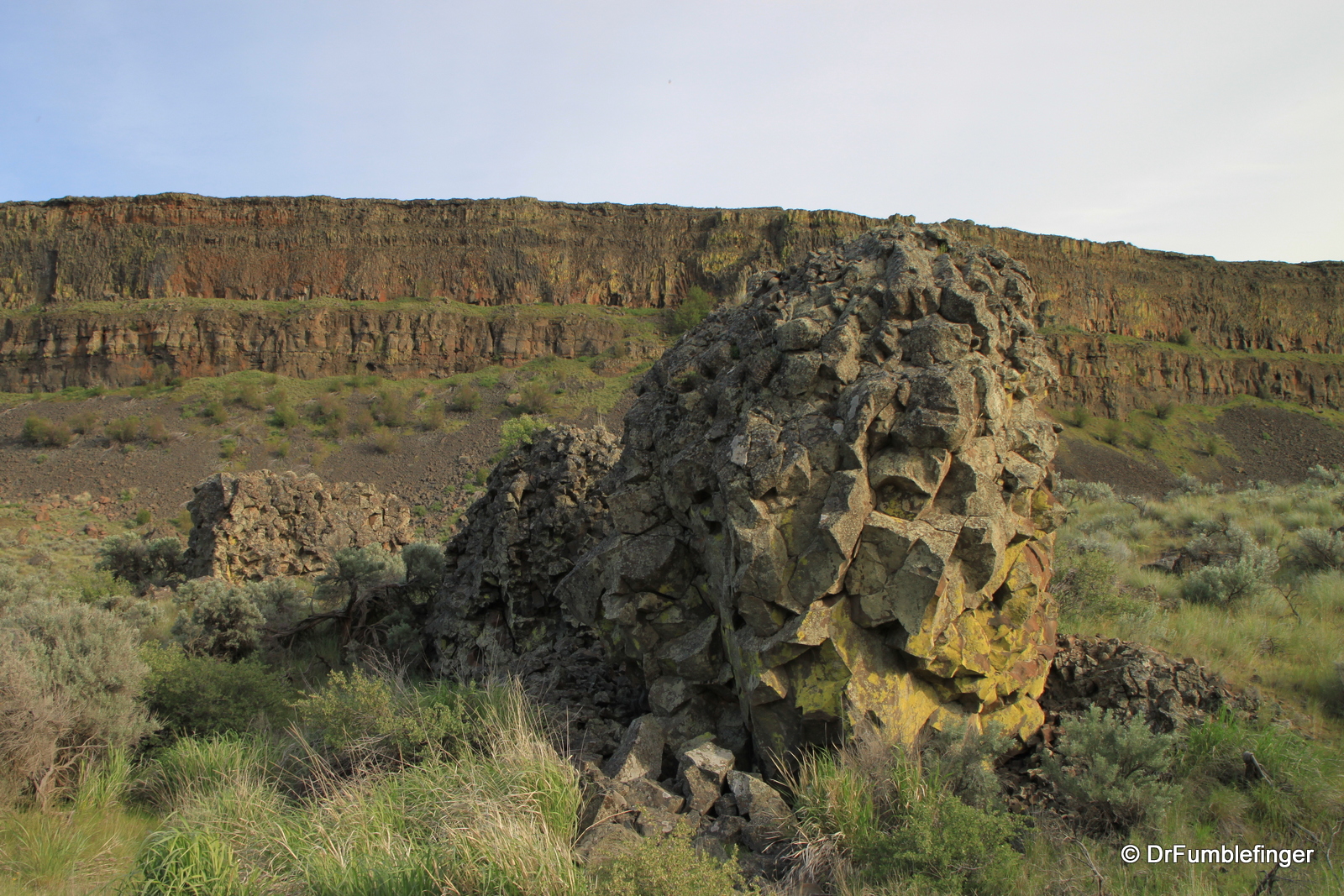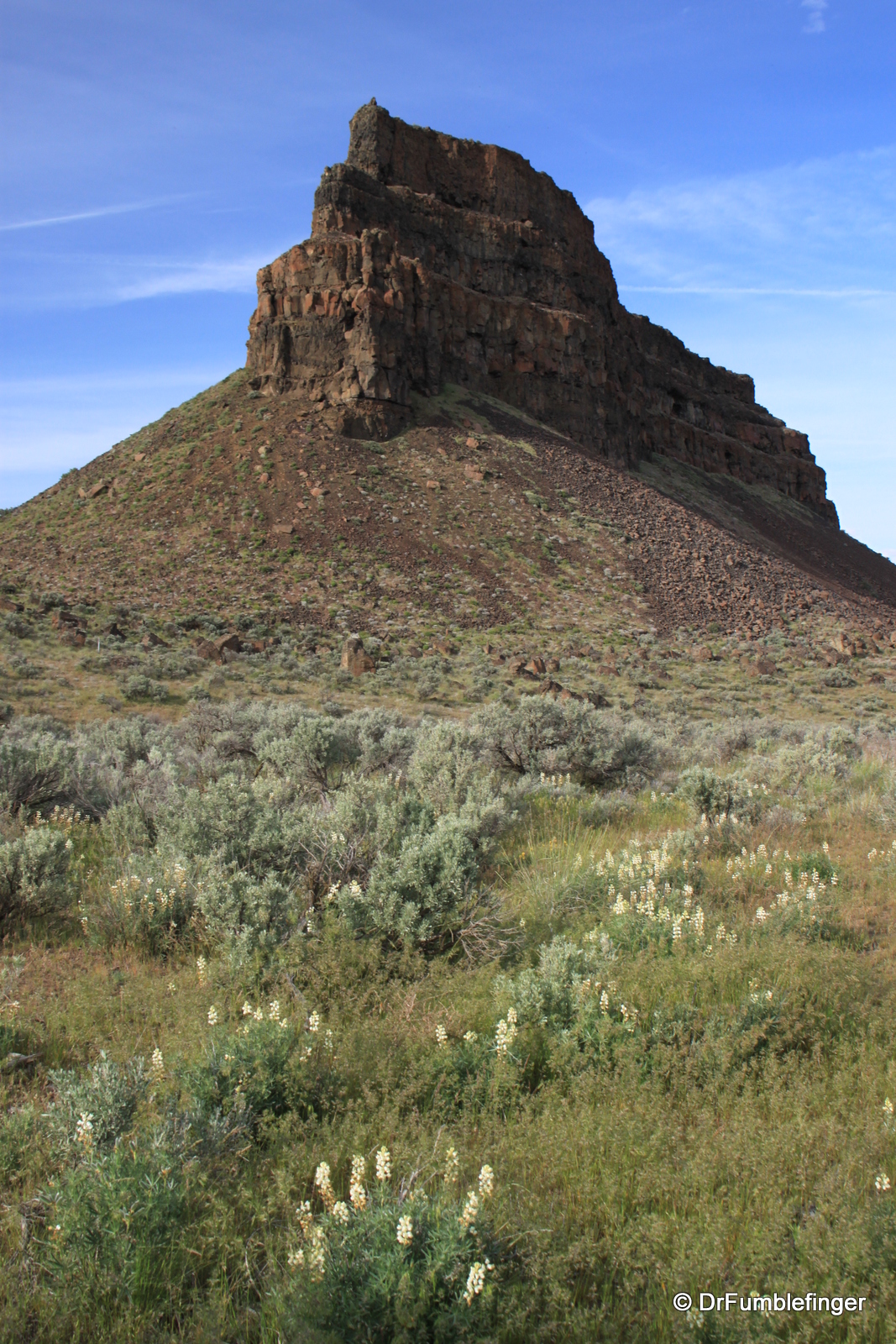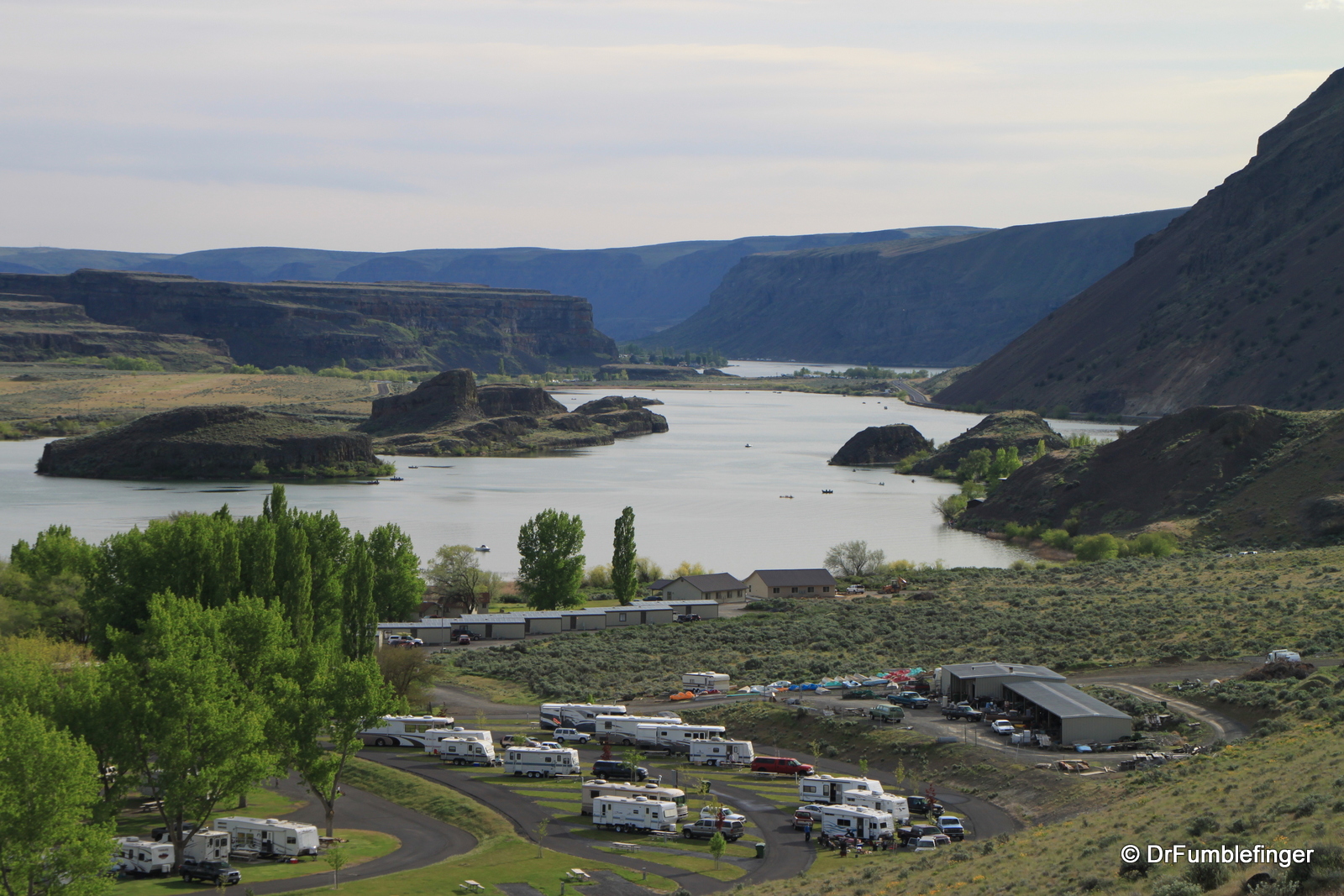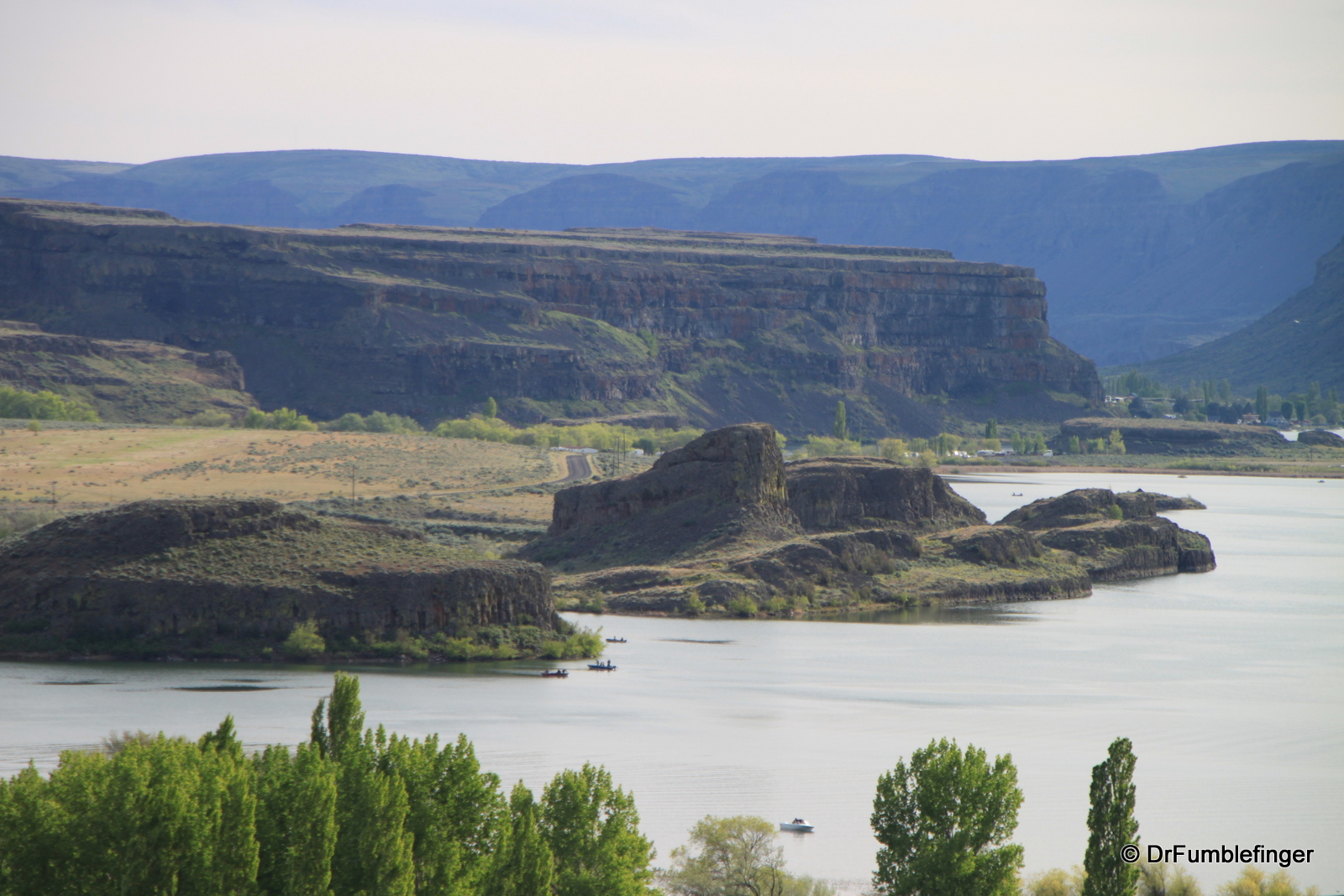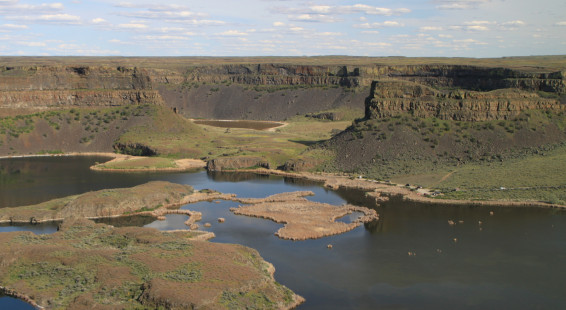
Imagine a waterfall with a precipice over three and a half miles long and a drop of over 400 feet! (By comparison, Niagara Falls is about 1/10th as wide). Imagine millions of gallons of water pouring over it each second, draining the flooded plains of central Washington State. When you gaze at the geologic skeleton of this event, try to envision what it was like here 10-15,000 years ago as snow and ice from the last great Ice Age began melting and shaping the landscape.
I’ve always had a general interest in science and find the geology of Dry Falls State Park to be fascinating. To understand what you now see in this park a short review of geologic theory is helpful. During the last Ice Age, a dam of ice formed at a huge lake, Lake Missoula, over western Montana. As climate changed the ice dam broke and released a huge amount of water which flooded the Idaho Panhandle and Eastern Washington (Missoula Flood). This event probably happened many times and with each breaking of the dam a powerful rapidly moving wall of water some 300-400 feet high was released. This massive flooding caused erosion of the basalt in the central part of Washington state and formed a series of canyons (called “coulees” — largest being Grand Coulee in which Dry Falls is located). Dry Falls is thought to have been progressively eroded and has retreated some 20 miles from its original position near Soap Lake in the south to its present skeletal location. The geology of central Washington is dotted with these coulees, eroded basalt and a string of small lakes collectively called the “Channeled Scablands“). For a good, concise review of this history please click here.
Your first stop here should be to the small Visitor Center located off route 17. From this view point you will fully see and comprehend what Dry Falls was and enjoy the beauty of the cliffs and small lakes that dot the basin of the park. Most of these lakes are the sequelae of “plunge pools” at the base of the old waterfalls. The park is a popular place for fishing (stocked with bass and rainbow trout), camping and swimming — and is especially popular in the spring and fall as it gets pretty hot in the summer. Several short hikes are available in the basin area. After taking in the view from the rim drive down to the lake level and contrast this view of the geology with that from the cliff’s edge (It’s not as impressive but still beautiful).
For further information please contact the Sun Lakes/Dry Falls State park website.For further information please contact the Sun Lakes/Dry Falls State park website.
(Click on thumbnails to enlarge, right arrow to advance slideshow)


